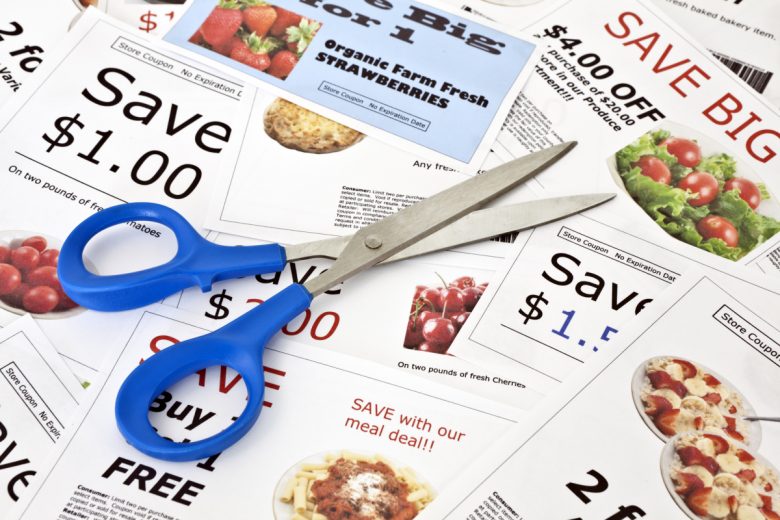When starting a new business, many of us may be told to ‘stick with what you know’. In an ever-evolving, unprecedented digital age, it can be daunting to completely abandon the marketing strategies we grew up with and switch to digital marketing.
We have seen for generations proof that traditional marketing works. But despite this temptation to stick with this solid model, we know that in the future, traditional marketing may not have as big of a seat at the strategy table. In this article, we will look at the different types of traditional marketing, their benefits and drawbacks, and the possible challenges they might face in this new digital age.
Billboards
One of the key advantages of using billboards in traditional marketing is their ability to reach a large audience. By placing a billboard in a high-traffic area, businesses can expose their brand to thousands of people each day. Whether it’s along the side of a busy highway, or in a populated part of Times Square, billboards are proven to be a great form of exposure.
Similar to mobile marketing, this type of marketing can be especially effective for businesses that are targeting a local market. This is because it can help to build awareness and familiarity with the brand among residents in the area. A great example of this would be promoting via billboards in rural towns and neighborhoods; taking over the local market for your product.
Another advantage of using billboards in traditional marketing is their flexibility. Businesses can create custom designs for their billboards to reflect their branding and messaging, and they can choose the size and location of their billboards to reach their target audience.
However, traditional marketing in billboards also has some limitations. It can be expensive to produce and place billboards and their effectiveness may be difficult to measure. While we know that hundreds of people may be driving past these billboards, we can’t always directly attribute it to consumer expansion unless we ask those consumers to answer a survey or questionnaire detailing where they learned about the brand. Additionally, because billboards are often located along busy roads, their messaging may be quickly forgotten or overlooked by viewers who are distracted by other stimuli.
TV and Radio Broadcasting
Traditional marketing in TV and radio broadcasting refers to using television and radio ads to reach a large audience and promote products or services. This type of marketing can be effective in building brand awareness, driving sales, and reaching a specific target market.
One of the key advantages of this type of marketing is its ability to target specific demographics; something billboards do not possess. Many television and radio stations cater to specific audiences. Sports fans, music lovers, or news junkies, for example. By placing ads during programs that attract a specific audience, businesses can reach the people most likely to be interested in their products or services.
However, it can be expensive to produce high-quality ads and buy airtime. Especially, during popular programs on TV or broadcasts. Additionally, because viewers and listeners often tune out during commercial breaks, ads may not always be effective at capturing their attention or driving sales. Similar to billboards, other stimuli while driving or during commercial breaks may mean less customer recall for those brands.
Direct Mail Marketing
Using targeted mailing lists is a great way for businesses to reach people who are most likely to be interested in their products or services. Direct mail allows businesses to personalize their messaging and offers to their targeted demographics, potentially increasing response rates.
Direct mail also has a great advantage in its ability to generate leads. It can be used to invite people to events, offer free samples or trials, or provide coupons or discounts, which can entice people to try a product or service based on previous experience. I’m sure that your mail has, oftentimes, consisted of catalogs or coupons based on your prior purchases or service subscriptions.
However, traditional marketing in the form of direct mail can be challenging. It can be expensive to design and print high-quality mailers and to purchase targeted mailing lists. Paper and mailing services are standardly going to be more expensive than sending out a coupon or catalog online. It is this online option that makes direct mail also less effective in today’s digital age. Most people just prefer to receive information and offers via email or social media.
Posters
Posters are typically designed to catch the attention of passers-by and convey a message quickly and effectively. They can be placed in high-traffic areas such as train stations, bus stops, and on billboards. The key to a successful poster campaign is to create an eye-catching design that grabs the viewer’s attention and communicates the message.
Traditional marketing in posters can be particularly effective for promoting events such as concerts, festivals, and sporting events. They can also be used to promote products and services such as movies, products, or services offered by a local business.
When designing a poster for traditional marketing, it’s important to consider the target audience and the message that needs to be conveyed. The design should be clear and concise, using a mix of images and text to effectively communicate the message. The poster should also be placed in a location where it will be seen by the target audience.
Event Marketing
Event marketing is a promotional strategy that involves creating an event to get the word out about your business. This could be a seminar, Meetup event, or even a business social event. A happy hour event, for example. This type of traditional marketing is used to generate leads, increase brand awareness, and foster customer loyalty.
To succeed at event marketing, you need to start by identifying your target audience and their preferences. Who do you want to attend the event and why/ Based on this information, you can design an event that will appeal to your audience. You can also collaborate with partners and sponsors to increase the reach and impact of your event.
The next step is to promote your event. The first place to do this is on social media and with email marketing. Probably a good idea to use paid online advertising too. You can also use offline channels such as flyers and billboards to reach a wider audience.
During the event, it is essential to create a positive experience for attendees. You can do this by providing engaging activities, good food, and even a few guest speakers or presenters.
In the past, the benefits of hosting an event were only gained during the event itself. However, now that the general public is used to attending online events, you can live stream your event to an even larger audience. You can also publish your event on your YouTube channel so that you can attract additional leads and drum up some interest in your next event.
Newspapers and other Print Ads
A running theme among traditional marketing tactics is the ability it has to target specific demographics. Newspapers and magazines are no different. They often have specific readerships, determined by subscriptions, which also helps to increase brand recognition and familiarity among readers.
Another advantage of this type of marketing is its ability to provide a tangible and memorable experience. Print ads can be visually engaging and readers can physically hold and interact with the ad. Having something they can hold can help to capture their attention and make a lasting impression. This physicality is lost in the digital space. Brand recall is proven to be more effective in a tangible format.
However, the limitations of newspaper and other print ads are the same as other traditional marketing tactics. It can be expensive to design and print high-quality ads and to purchase ad space in popular publications. The effectiveness of such a venture with the rise of digital media is also something to consider. Print advertising may be less fruitful in reaching younger audiences or those who prefer to consume information digitally.
Conclusion
Overall, the effectiveness of traditional marketing in this new age is coming into question. To decide if going the traditional route is worthwhile for your business, you must decide if the ability to target specific demographics and the supposed higher chance of recall for tangible advertisements is worth the higher costs.
Also Read:
Mobile Marketing vs Traditional Marketing: Which Should Businesses Choose?













Pingback: How Direct Mail Can Assist Construct Lasting Buyer Relationships - The Owl Report
Pingback: 7 Types of Influencer Marketing Campaigns - StartUp Mindset
Pingback: 7 Retail Business Goals to Set If You Want to Succeed - StartUp Mindset
Pingback: 7 Types of Traditional Marketing - Ikaroa
Pingback: Run Your Online Enterprise Following these Cutting Edge Tactics To Make You Invincible ·
Pingback: 7 Types of Traditional Marketing – Entrepreneur – Start, Run and Grow Your Business
Pingback: 7 Types of Traditional Marketing – Joseph Odierno Buffalo
Pingback: 7 Types of Traditional Marketing – Andrea Zanon
Pingback: 7 Types of Traditional Marketing Krownjobs.com - krownjobs
Pingback: 7 Types of Traditional Marketing – Austin Rotter